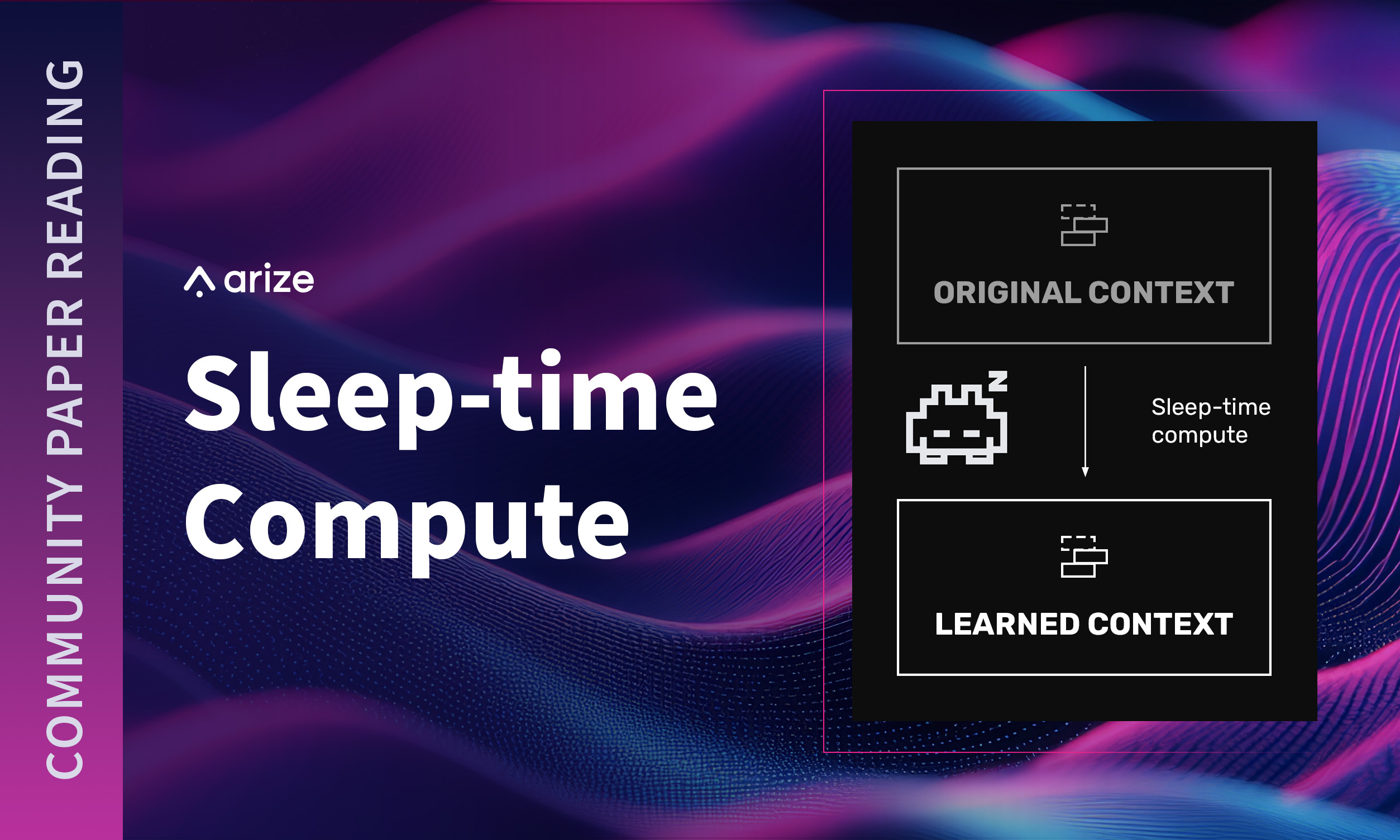We recently discussed “Sleep Time Compute: Beyond Inference Scaling at Test Time,” new research from the team at Letta. The paper addresses a key challenge in using powerful AI models: the trade-off between gaining better performance by having models “think longer” or “reason deeper” at test time, and the resulting increased latency for users and higher GPU costs for providers. The core idea proposed is to shift compute-intensive work to “sleep time” – periods when the model is not actively responding to a user.
This approach aims to shift the pareto frontier between test time compute and accuracy, potentially leading to the same accuracy with less compute or higher accuracy with the same compute budget. This is potentially a game-changing way to optimize AI performance and efficiency by leveraging idle compute resources.
What follows here is a recording of our discussion followed by a summary of what we discussed and what we think about the paper.
Watch
Listen
Dive In
Summary: Sleep-time Compute
In the ongoing evolution of AI, one of the most persistent challenges is balancing accuracy with compute cost—especially for powerful models like large language models (LLMs). Traditionally, improving model performance at test time has meant allowing the model to “think harder” in real-time, which results in higher latency and greater GPU costs.
Sleep-time Compute reimagines this trade-off. Rather than making users wait while models do intensive reasoning, Sleep Time Compute shifts much of that work to offline periods—when the system is idle.
The Traditional Trade-Off: Accuracy vs. Real-Time Cost
To boost accuracy, AI systems often rely on test-time scaling—giving the model more time and compute to generate answers while a user waits. This might involve longer token generation paths or deeper reasoning chains. The downside? Higher latency and significantly higher GPU usage.
This method imposes a direct trade-off:
- Better answers require slower response times and more expensive compute.
- Faster responses mean compromising on quality.
Sleep Time Compute: Decoupling Reasoning from Response Time
Sleep Time Compute offers a smarter alternative. Instead of performing all reasoning during a live query, it splits tasks into two phases:
- Offline reasoning during “sleep time,” using a heavier model.
- Online response during user queries, using a lighter, faster model.
This is enabled by a multi-agent architecture:
- Raw Context: The base information the system works from—like a codebase or conversation history.
- Sleeper Agent: A powerful model that runs periodically or during idle moments (like a cron job), analyzing the raw context and generating learned context—summaries, symbolic facts, or chains of thought.
- Memory Store: A database where these precomputed insights are saved.
- Serve Agent: A lightweight model that, during a user query, pulls relevant information from the Memory Store and quickly crafts an answer.
Crucially, the Sleeper Agent doesn’t need to know the exact future questions—it just needs to anticipate likely or useful information based on the raw context.
Why It Matters: Shifting the Cost-Accuracy Curve
This decoupling of compute from real-time interaction unlocks powerful new trade-offs:
- Same accuracy, lower cost: By precomputing learned context, the Serve Agent can deliver high-quality answers using about 1/5 the tokens and much less GPU compute.
- Higher accuracy, same cost: Keeping the same compute budget at inference time, models using Sleep Time Compute can deliver ~15% more correct answers.
- Compute amortization: When context is reused—such as in follow-up questions—costs drop even further, by 2–3x compared to reprocessing raw context each time.
This is more than caching previous answers—it’s generating reusable insights ahead of time.
When Sleep Time Compute Works Best
While the benefits are clear, the approach is best suited to certain use cases:
- Stable or semi-static context: Works well when the raw data doesn’t change frequently (e.g., a fixed knowledge base).
- Predictable queries: Performs better when questions fall within a statistically likely range.
- Larger contexts or repeated usage: Most efficient when serving multiple queries from the same source material.
For small, one-off interactions, the overhead of pre-computation may not be justified.
Risks and Considerations
There are a few limitations to be aware of:
- Hallucination propagation: If the Sleeper Agent makes an error, that misinformation could be baked into the learned context and amplified by the Serve Agent.
- Storage and retrieval design: Efficiently managing the Memory Store and relevance retrieval is critical to performance.
- Complexity trade-offs: Multi-agent systems require orchestration and monitoring.
Broader Impacts: Toward More Efficient and Stateful AI
The implications of Sleep Time Compute extend beyond cost and performance…
- Utilization of idle GPU capacity: Organizations can use off-peak times for pre-computation, improving hardware efficiency.
- Progress toward stateful agents: By storing and reusing contextual insights, systems can begin to develop memory and continuity across sessions.
- Greener AI: Reducing unnecessary real-time compute contributes to more sustainable and cost-effective AI deployments.
This mirrors patterns in traditional software—like batch jobs or build-time optimization—now applied to AI reasoning.
Conclusion: A Paradigm Shift in How We Use Compute
Sleep Time Compute represents a fundamental rethink of how AI systems can operate—separating reasoning from response, and enabling smarter, leaner inference. It invites teams to be more strategic with their compute resources, designing systems that are not only more efficient but also more anticipatory and responsive.
In a world where both performance and cost matter, Sleep Time Compute isn’t just a technical innovation—it’s a design philosophy.



